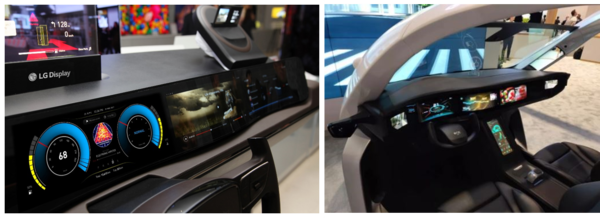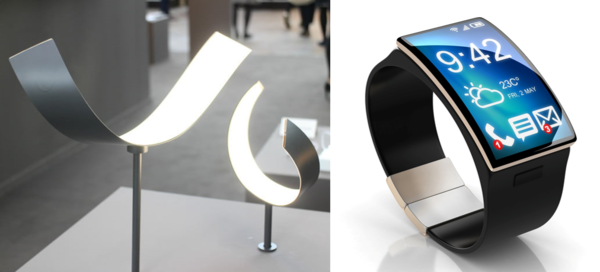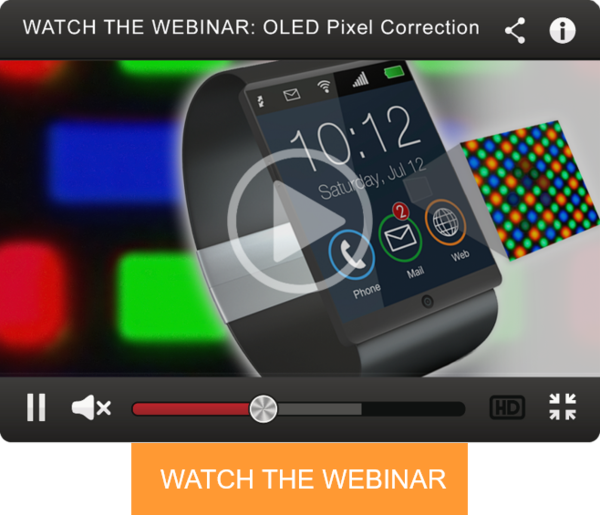Is OLED Going to Take Over the World?
At the recent SID Display Week 2019, it certainly looked and sounded like Organic Light Emitting Diode (OLED) display technology is booming. Although LCDs still dominate the market at more than 90% of all display screens produced, OLED is predicted to gain a 40% share of the total display market by 2023.1
One factor that has helped make LCDs so widespread and affordable to date is an abundance (and sometimes oversupply) of production capacity. This abundance has been driven in part by the Chinese government’s subsidies for construction of LCD fabrication facilities. But those subsidies are falling off lately and construction of new OLED fabrication capacity is increasing, for both rigid and flexible OLED panels.2 Korean suppliers such as Samsung and LG are also rapidly converting their production capacity to OLEDs.1
OLED for Smartphones
OLED already owns 56% of the smartphone display market,1 and the spread of 5G telecommunication networks will likely increase demand for the AMOLED (active-matrix OLED) phones.3 Increasing interest in foldable and flexible displays is also driving demand for more OLED screens, with projected growth of 36% in flexible screens through 2022.4 Meanwhile, other emissive technologies that might offer performance advantages over OLED—such as miniLED, microLED, and quantum dot—are still years away from mass market production and adoption.5
OLED in Automobiles
Because OLED panels are thin, power efficient, and brighter than LCD, they are particularly useful for multiple applications in the automotive industry. They can be made flexible and transparent, lending OLED displays to many interior automotive uses such as free-form and curved dashboard and console interfaces. As early as 2010, Lexus introduced a white PMOLED (passive-matrix OLED) 8-inch display into its RX model passenger sedan. Major panel makers such as LG and BOE have also increased their portfolios toward automotive OLED displays.
More recently, multiple OLED automotive cockpit displays were seen at the 2019 CES and Display Week events—for example, those from LG and BOE below.

LG Display’s plastic OLED (POLED) automotive dashboard (left) and BOE’s “Smart Cockpit” (right). Image credits: LG Display, and BOEVXEurope.com, respectively.
Additional OLED Applications
Beyond smartphones and automobiles, OLED technology is being applied in the tablet, laptop/PC, and television industries. The technology is particularly popular for smart watches and other wearable consumer devices, where OLED’s flexibility, visual clarity, brightness, and power efficiency (meaning longer battery life) provide an advantage for these typically miniature displays that are used on the move under all types of ambient light conditions. Additionally, OLED “light bulbs” (made of a thin film of emissive material) are being explored for both small light sources and larger digital signage.

LG's bendable OLED light ribbons (left) and example of an OLED smart watch (right). Image credit for LG light ribbons: Andy Boxall/Digital Trends.
Meeting OLED Quality Demands
As OLED production ramps up around the globe, a critical success factor for the technology is the ability to inspect and qualify these displays to ensure visual performance and quality. When a quality display is produced from the get-go, high production yields can be maintained and costs kept in line with mass market viability. Radiant has contributed to this effort with our advanced solutions for OLED measurement and correction.
Inspecting OLED displays is in many ways more challenging than inspecting LCDs. Traditional LCD displays using LED backlights produce only a moderate amount of luminance or color variability across regions of the display screen. With OLED (and other emissive display types), however, every individual emitter in the display can be subject to a high a degree of variability. It’s necessary to be able to measure and quantify every pixel and sub-pixel element of an OLED display to identify defects and ensure uniformity. Radiant’s ProMetric® Imaging Photometers and Colorimeters—paired with TrueTest™ Software—provide the combination of high resolution and image quality that’s needed to precisely measure each and every element in an OLED screen.
Our OLED “demura” solution even allows panel makers to correct mura (areas of uneven luminance and color) across the screen so that displays appear uniform for all colors and at all gray levels. The result is increased yields as the corrected displays can now be sold on the market. To learn more, watch our Webinar: “OLED Pixel Measurement & Correction”.

CITATIONS:
- Young, Ross, “The End of the LCD Era?” Display Supply Chain Consultants (DSCC), presented at SID Display Week 2019 Business Conference.
- Tamura, Yoshio, “Smartphone Display Market Outlook.” DSCC, presented at SID Display Week 2019 Business Conference.
- Li, Lisa, “Rising in Fluctuations: Supply & Demand Forecast in Global Large Size Display Market.” Sigmaintell, presented at SID Display Week 2019 Business Conference.
- Li, Jeffrey, “New Opportunities for the Smartphone Display Industry.” China Start Optoelectronics Technology (CSOT), presented at SID Display Week 2019 Business Conference.
- Reith, Ryan, “What’s Going On in the World of Smartphones?” IDC’s Worldwide Device Trackers, presented at SID Display Week 2019 Business Conference.
Join Mailing List
Stay up to date on our latest products, blog content, and events.
Join our Mailing List
